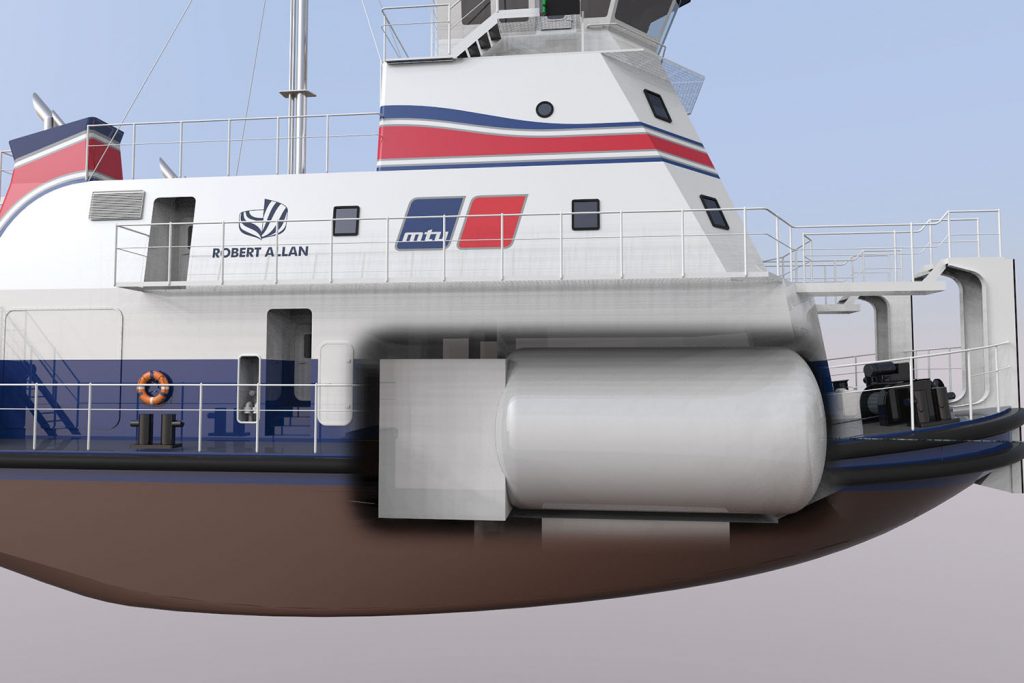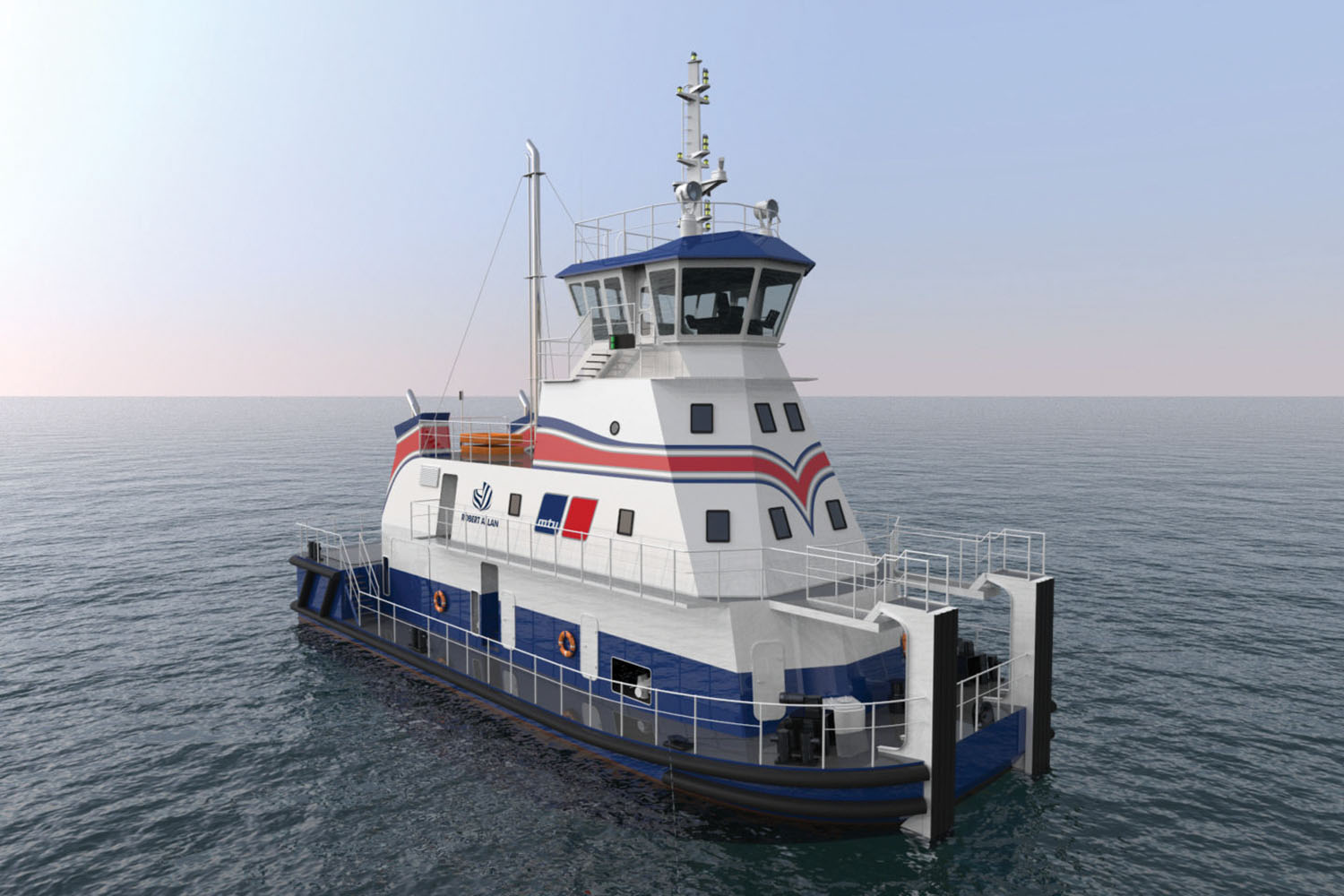Robert Allan Ltd. and MTU Friedrichshafen GmbH announced August 16 that they have developed a natural gas-fueled, shallow-draft pushboat design.
Liquefied natural gas (LNG) is attracting attention in the maritime industry, not just for its potential in reducing environmentally hazardous emissions, but also for its reduced cost when compared to other fossil fuel-based alternatives. For natural gas to become a preferred marine fuel, its availability needs to improve, and this fact alone has hindered its growth in some parts of the world, Robert Allan Ltd. said in the announcement. Some of the firm’s clients are actively engaged in developing the required infrastructure to make natural gas more readily available.

This project is a preliminary design based on the proven shallow draft RApide 2800-Z2 pushboat that currently operates on the Amazon River system. The vessel design was modified to suit a complete LNG propulsion system with two 746 kw. MTU 8V4000M55R-N Tier III gas safe main engines.
In addition to providing the engines, MTU also acts as the system integrator, which means that MTU will also provide the complete LNG package, consisting of the LNG tank system and integrated ship monitoring, LNG control and safety systems.
The boat would be 91 feet long, 34 feet wide and 10-1/2 feet deep, with a draft of 8.2 feet. It would have capacity for 70 cubic meters of LNG, 5,000 gallons of fuel oil, 7,000 gallons of potable water and 1,320 gallons of waste water.
While keeping the existing hull shape, the design was reconfigured to allow the installation of the LNG tank while still providing adequate space for other machinery and a comfortable work environment for the crew. The lower crew cabins, mess, and galley moved up a deck and the deckhouse was enlarged. The project complies with the rules for the gas system hazardous zones of a compact 91-foot tug. To ensure redundancy, there are two independent tank connection spaces attached to the LNG tank, one for each engine.
For continuous operation on a river system, the design accommodates a crew of 14, with master and chief engineer having single cabins and double cabins for the rest of the crew.
The vessel is designed to comply with DNV-GL rules with the following notations: Inland Navigation Vessels (Ru-Inv) 1a Z Pusher, Gas Fueled. The design is currently undergoing an “approval in principle” review.




